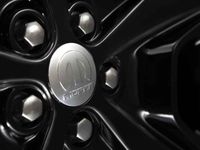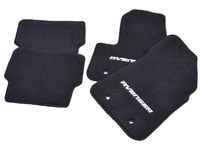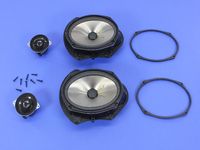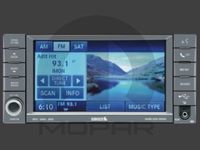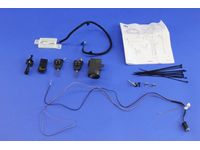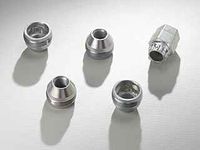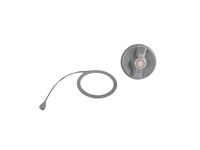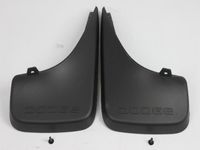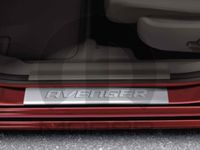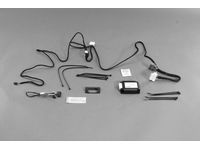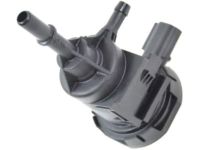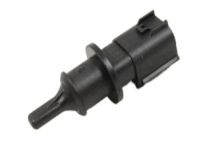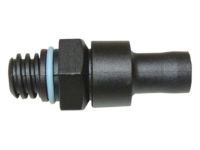
Why choose MoparPartsGiant
- Fast Delivery
Your Dodge Avenger deserves only Dodge Avenger genuine parts from MoparPartsGiant.com. There's zero risk involved when buying from us because all our Dodge Avenger auto parts are expedited directly from authorized dealers and backed by the manufacturer's warranty. For years, we've been the #1 Dodge Avenger online parts store. Interested in faster shipping? We offer expedited shipping on corresponding orders!
- Dedicated Service
Our outstanding customer service team is here to help you by email, live chat, or phone call with any inquiries regarding your purchase. Dedicated representatives are standing by to assist you with your shopping needs. With a complete Dodge Avenger parts catalog and a full selection of inventory, your parts are ready to be expedited anywhere in the nation without delays.
- Unbeatable Prices
For any genuine Dodge Avenger parts you need for standard maintenance or repair, we carry them. With our unbelievably low prices on Dodge Avenger parts, you won't go anywhere else for Dodge Avenger parts. We are your one-stop shop for Dodge Avenger parts without breaking the bank!
Popular Genuine Dodge Avenger Parts
- Engine Parts View More >
- Electrical Parts View More >
- Fuel Parts View More >
- Body - Sheet Metal Except Doors Parts View More >
- Cooling Parts View More >
- Steering Parts View More >
- Interior Trim Parts View More >
- Brakes Parts View More >
- Transmission Parts View More >
- Suspension & Drive Parts View More >
- Emission Systems Parts View More >
- Exhaust Parts View More >
Shop Genuine Dodge Avenger Parts with MoparPartsGiant.com
The Dodge Avenger, a front-wheel-drive mid-size sedan, made its debut in North America in 1994 as a two-door coupe, being produced until 2000. The model was reintroduced in 2007 as a four-door sports sedan, representing a compact sports car's principles: multifunctionality, power, and economy. Available with a 2.0L four-cylinder or a 2.5L V6, the Avenger offered versatility in power. The four-cylinder model could be paired with either a five-speed manual transmission or a four-speed automatic, while the V6 exclusively paired with the A604 automatic transmission. Boasting a wheelbase of 103.7 inches, the Avenger featured dual independent suspension and adjustable steering. Notable trim levels included the basic Highline and ES models. The exterior, designed by Ryan Nagode, came in a Café Latte color scheme, while the interior, designed by Ben S. Chang, was black-grey. The model also had integrated safety measures such as a vapor recovery system and a new generation of driver and passenger airbags. The power was evident in its DOHC straight-six engine producing 158 hp and 141 lb-ft of torque, while the DOHC four-cylinder engine had a displacement of 2.4L, all in an aluminum block with a cast-iron cylinder liner.
Dodge Avenger, with its stealthy good looks, spacious interior, and easy handling, can encounter common problems over time. According to CarComplaints.com, engine failure may occur around 50,000 miles, signaled by unusual engine sounds, decreased performance, stalling, excessive oil consumption, and starting problems. A lit Check Engine Light should prompt immediate inspection of the spark plug, air filter, oil filter, engine mount, and fuel tank. Suspension failure, while less severe, can still lead to serious issues. Avenger drivers have reported hearing clunking, rattling, or scraping sounds from underneath the vehicle, followed by uneven and excessive tire wear and a tilting vehicle. Prolonged neglect can result in a shaky, loose steering wheel and intense vehicle vibration, hindering control. Ensuring that the drive shaft, wheel bearing, shock absorber, and sway bar bushing are always functioning properly can prevent these issues. Regular maintenance is crucial to nip potential dangers in the bud. The cabin air filter, responsible for filtering contaminants from the air, requires frequent cleaning to protect occupants, especially those with respiratory issues. The windshield wiper, fog light, headlight, and antenna also need regular upkeep to ensure optimal performance.
Choosing OEM parts guarantees top-tier quality and durability. They are carefully designed to adhere to the strict specifications of the official factory and undergo thorough quality control inspections during production, ensuring long-lasting resilience and an impeccable fit. Our website is your one-stop destination for OEM Dodge Avenger parts, like Doors, Door Mirrors And Related Parts, Air Conditioners & Heater, all competitively priced to give you the best value for your money. Every genuine Dodge Avenger part, such as Wiper & Washers And Cylinder & Keys, Differential And Drive Line we offer is backed by the assurance of the manufacturer's warranty. Rest assured, we have an easy and straightforward return policy to ensure a hassle-free process for you. Additionally, we pride ourselves on our swift delivery service, ensuring you get your parts in a timely manner. Feel confident shopping with us!
Dodge Avenger Parts Questions & Answers
- Q: Where is the EVAP Canister Purge Valve and Canister Located on Dodge Avenger?A: To remove the EVAP canister purge solenoid, first remove the Powertrain Control Module. Label and disconnect the EVAP hoses, slide out the red lock, disconnect the electrical connector, and depress the retaining tab. To remove the EVAP canister, raise the vehicle and secure it on jackstands. Disconnect the electrical connector and hoses, then remove the mounting fasteners from the bracket. Installation is the reverse of removal.
- Q: How to Install the IAT Sensor on Dodge Avenger?A: The Intake Manifold Temperature sensor must be installed correctly in the air duct or housing. The sensor is located on the air filter housing or air inlet ducting. To remove the sensor, disconnect the electrical connector and turn it 1/4-turn counterclockwise before pulling it out. Replace the O-ring if necessary. Installation is the reverse of removal.
- Q: What is the Positive Crankcase Ventilation (PCV) System and PCV Valve on Dodge Avenger?A: The Positive Crankcase Ventilation (PCV) system reduces hydrocarbon emissions. It consists of the PCV valve, an inlet hose connecting the air filter housing to the valve cover, and a crankcase ventilation hose connecting the rear valve cover to the intake manifold and the PCV valve restricts flow when the intake manifold vacuum is high.


















































